Lou Leto October 02, 2022 All Feature Vehicles
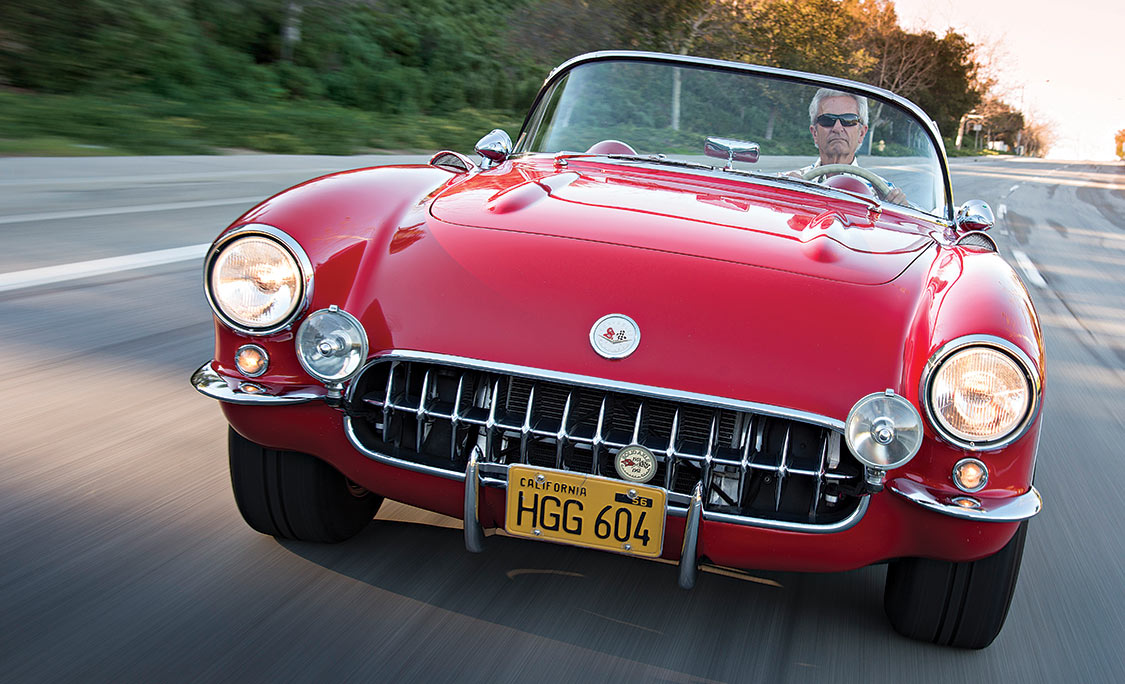
The first question to ask a car guy is: What drew you to the vehicle that you own?
Jim Nielsen of San Clemente, California answered without hesitation. He admired the look of the Mercedes Benz 300SL. To him, the styling of a 1957 Corvette emulated that look. A lesson, proved over and over: When you start looking for a car, it will find you. Jim’s 2001 search for a ’56 or ‘57 Corvette was rewarded with a find in nearby Oceanside. It was a project car that had once been a drag racer in Hawaii. The frame was painted and new bushings had been fitted in the A-arms. All the chrome and stainless trim had been pulled off and put in boxes. The media-blasted body had been gel coated. Then, as many ambitious projects are prone to do, progress stopped. Jim’s purchase rescued the unfinished Vette.
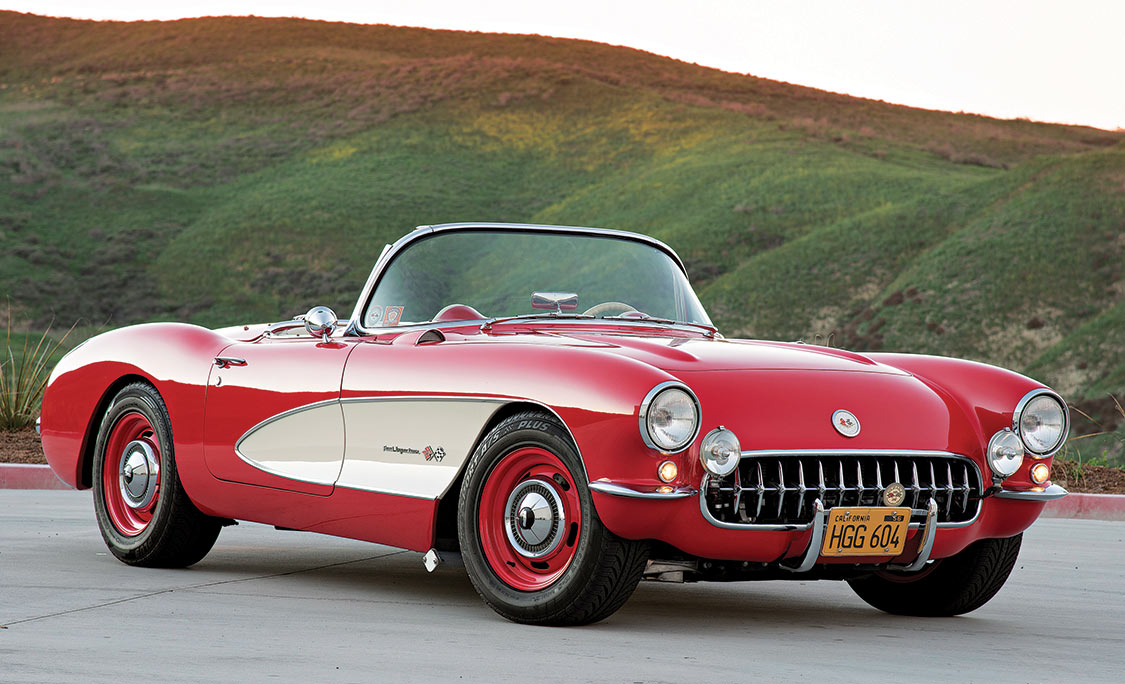
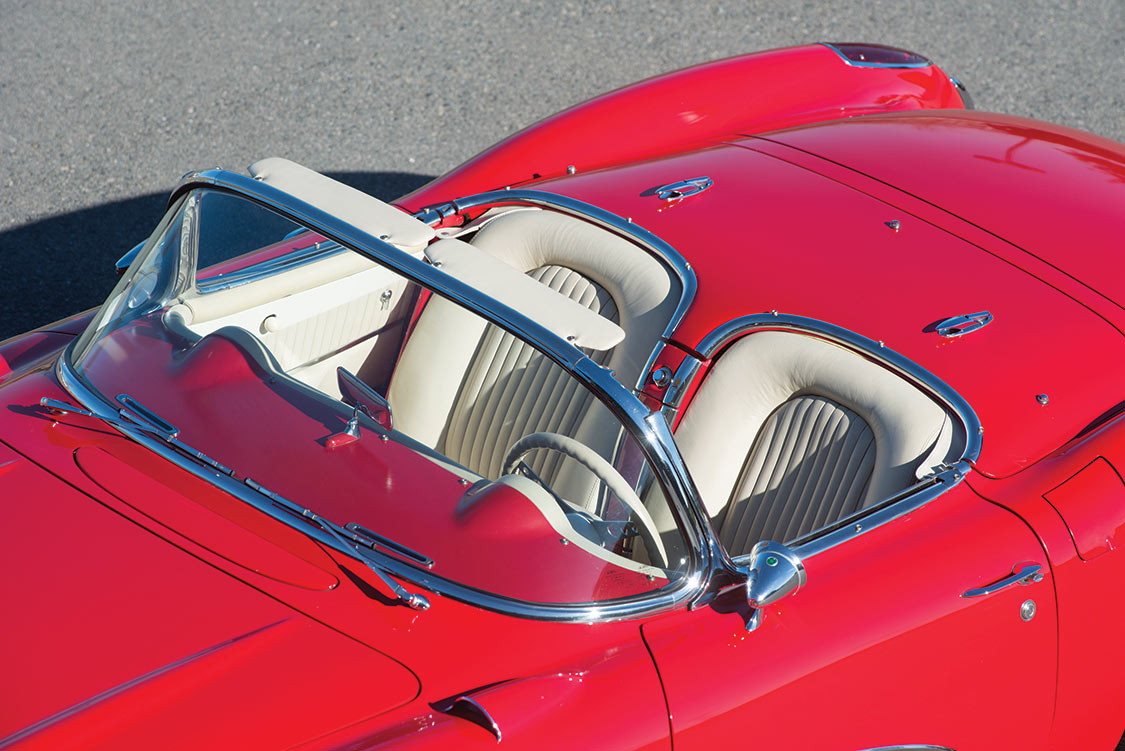
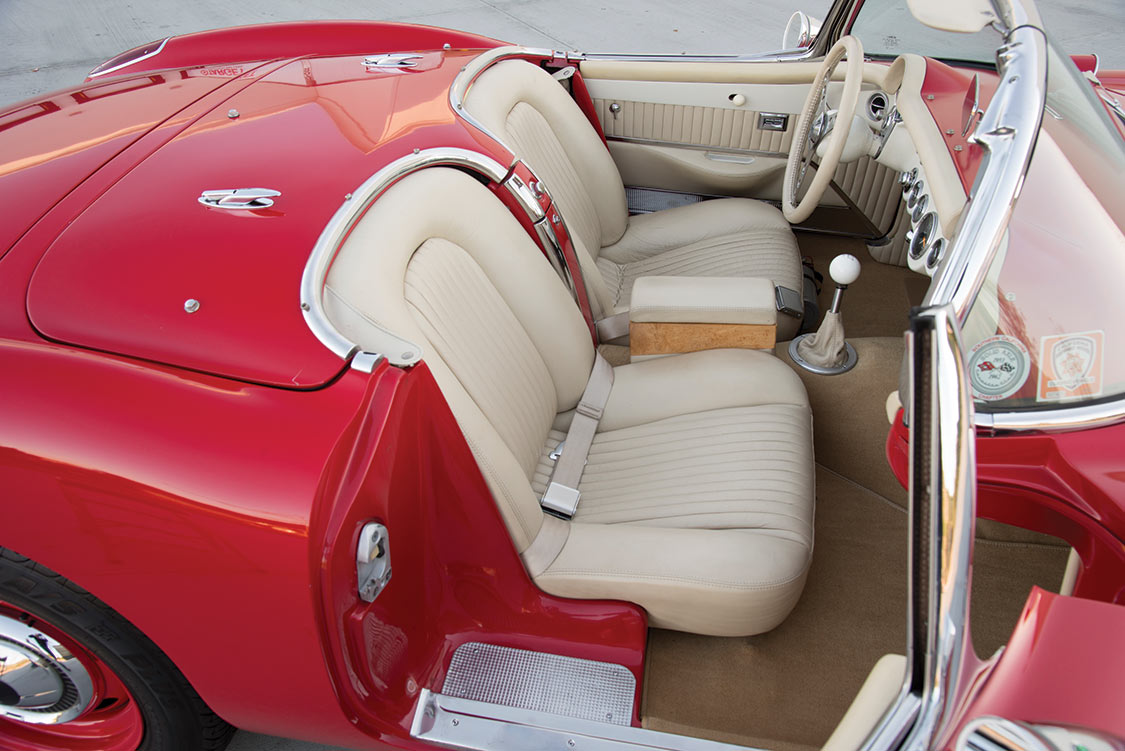
As Nielsen started reading all the enthusiast magazines for ideas and how-to help, he was intrigued by articles about installing a fuel efficient modern engine. Further investigation took him down a path not yet frequently traveled at that time. If he was considering a modern engine, why not place it into a modern-handling chassis? Knowing the history of C1 Corvettes (1953-62 models), Jim knew that they were built with a suspension based upon late-40’s Chevrolet passenger cars, using kingpins, a solid rear axle, drum brakes, and a worm and sector steering box. The ‘Vettes of the era looked cool and were fast going straight down the street, just don’t ask them to turn right or left. As a long-term Sports Car Club of America (SCCA) member, Jim was eager to have a handling vehicle capable of carving up California canyons or road racing tracks.
This ex-drag car is no drag on the street. Bought in boxes, this vintage ‘Vette was changed into a road handling powerhouse with a modern motor and a contemporary chassis.
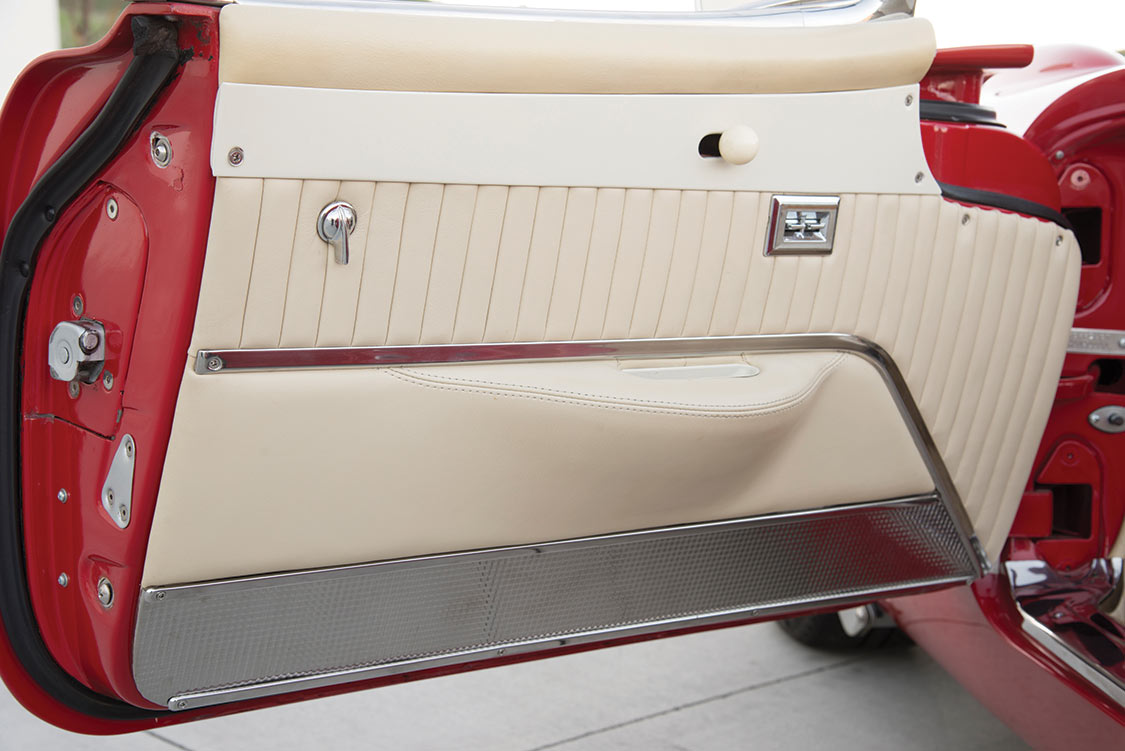
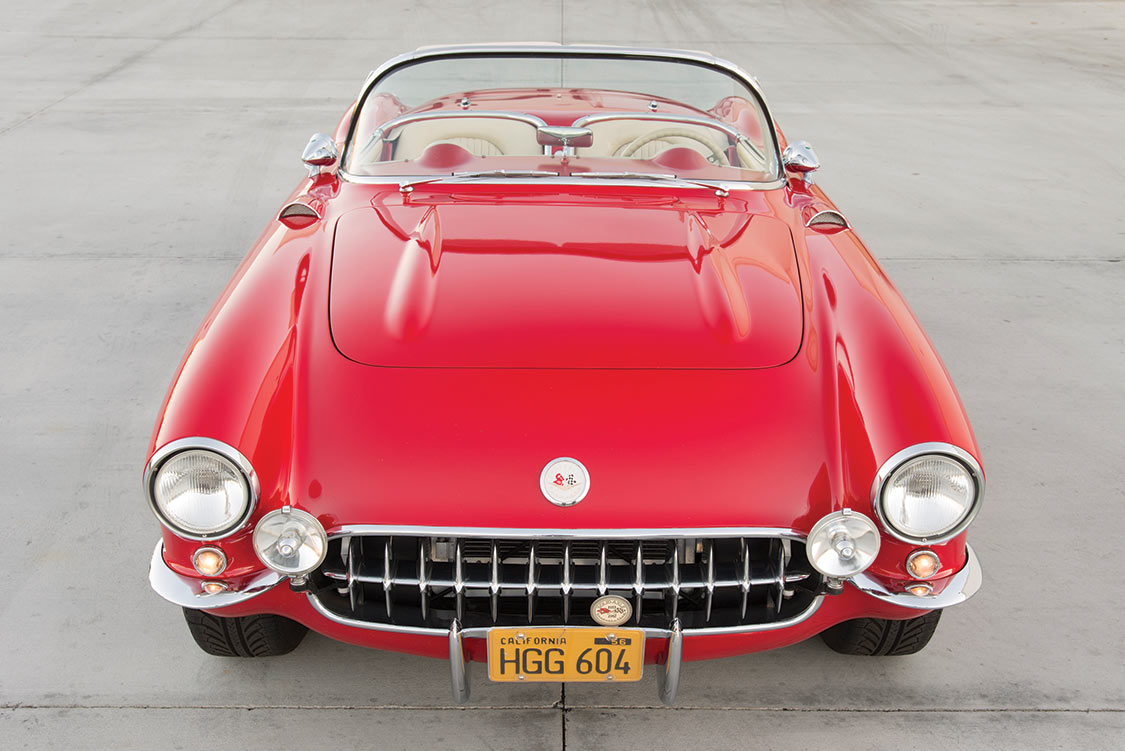
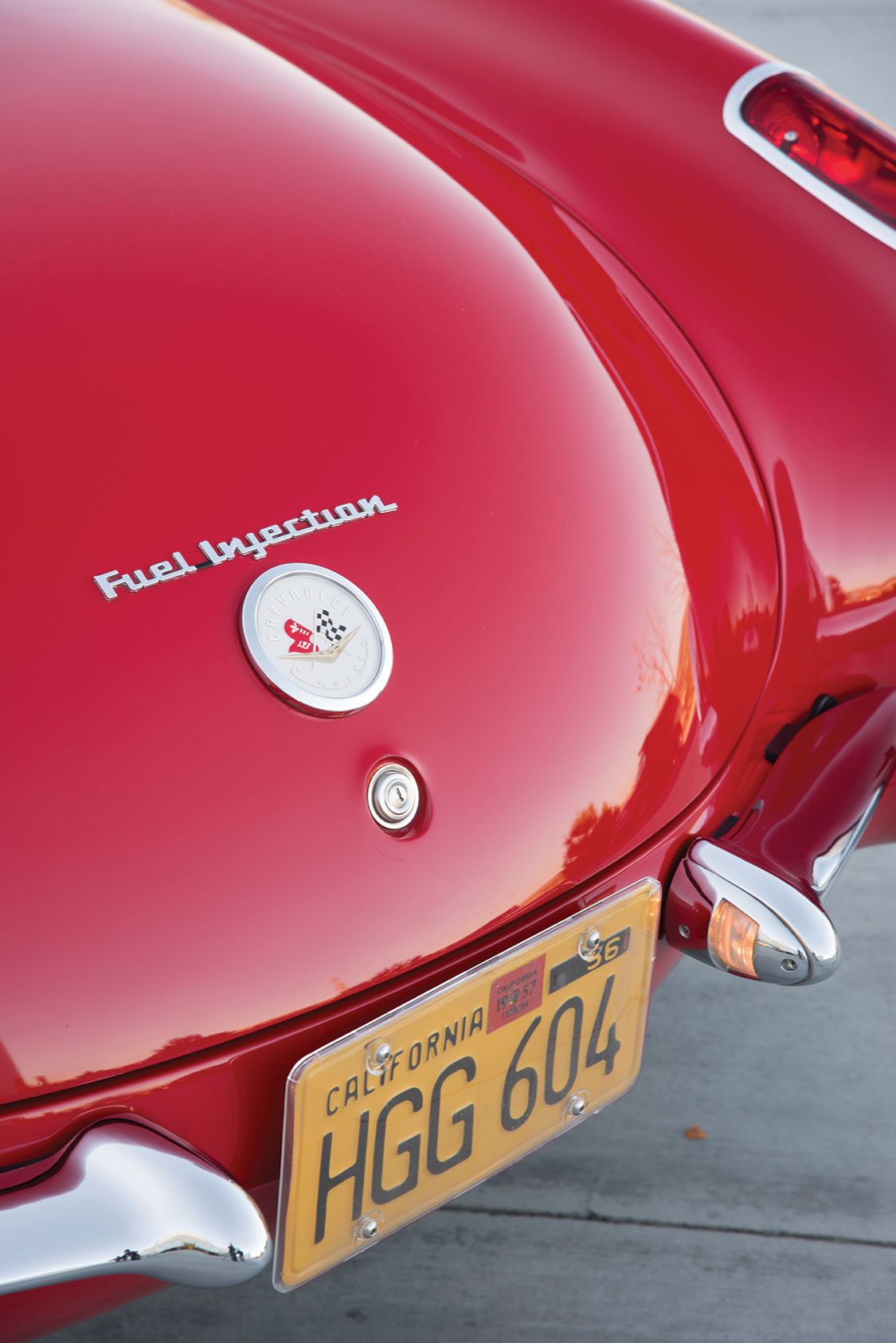
Paul Newman of Newman Car Creations already had demonstrated proven success with adapting late-model Corvette suspensions and brake systems to earlier C1 Corvette frames. After Jim talked with Newman, he sent his frame over, in 2001. Included were the collected Z51 suspension components from a 1985 C4 Corvette, intentionally selected for that year’s short steering geometry components that would work in the narrow-body early Corvettes. Nielsen also acquired and sent along a 1998 C5 Corvette LS1 engine and a Camaro six-speed transmission, both sourced from a reputable parts yard. Newman Car Creations made the frame modifications necessary to accommodate the suspension, and the finished chassis was powder coated.
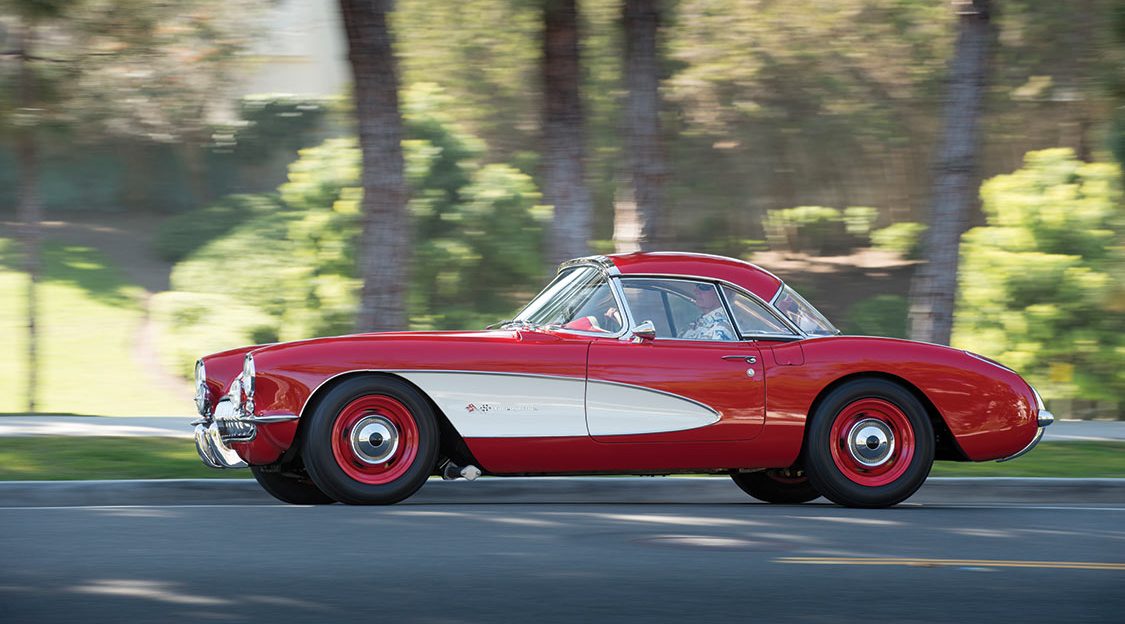
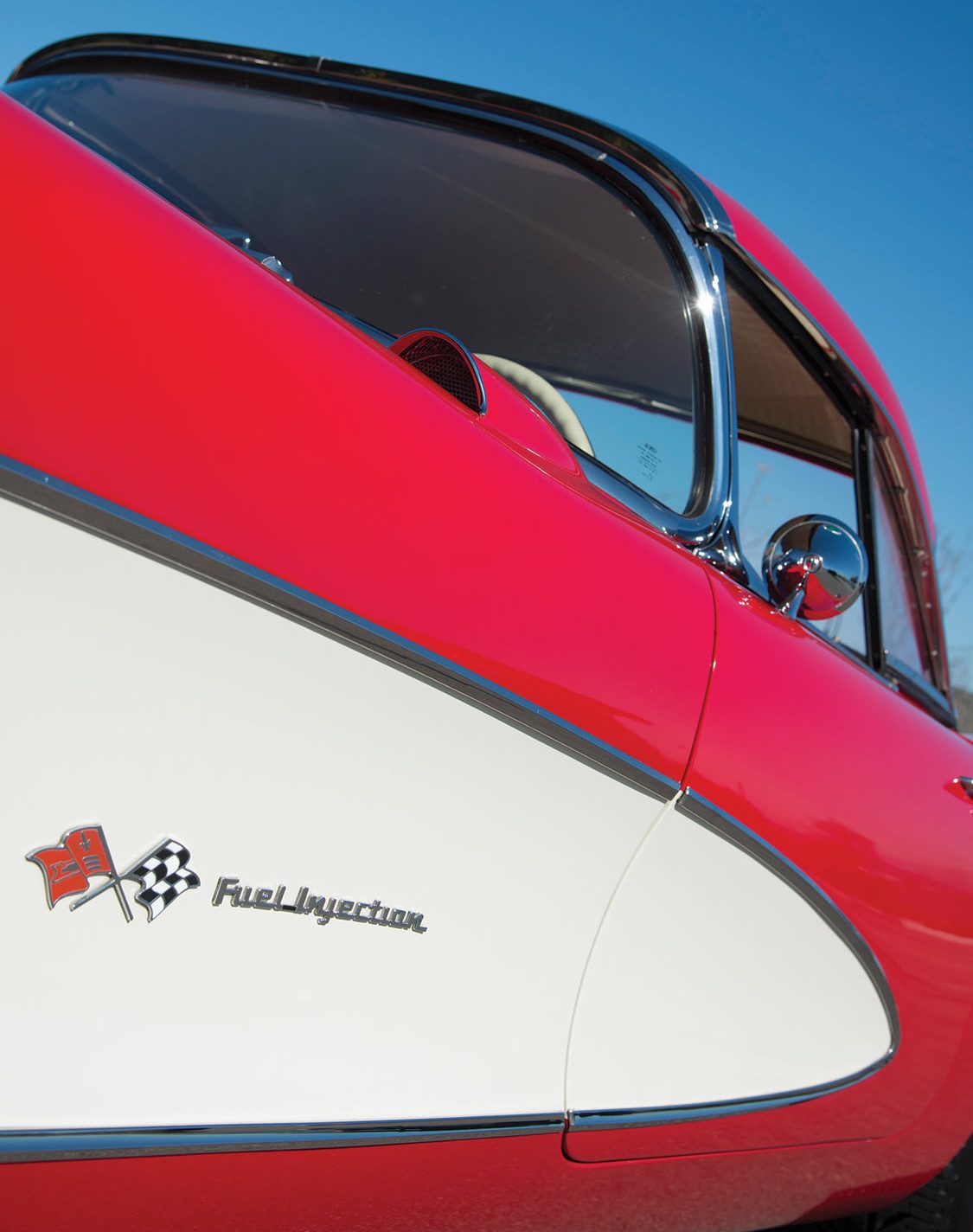
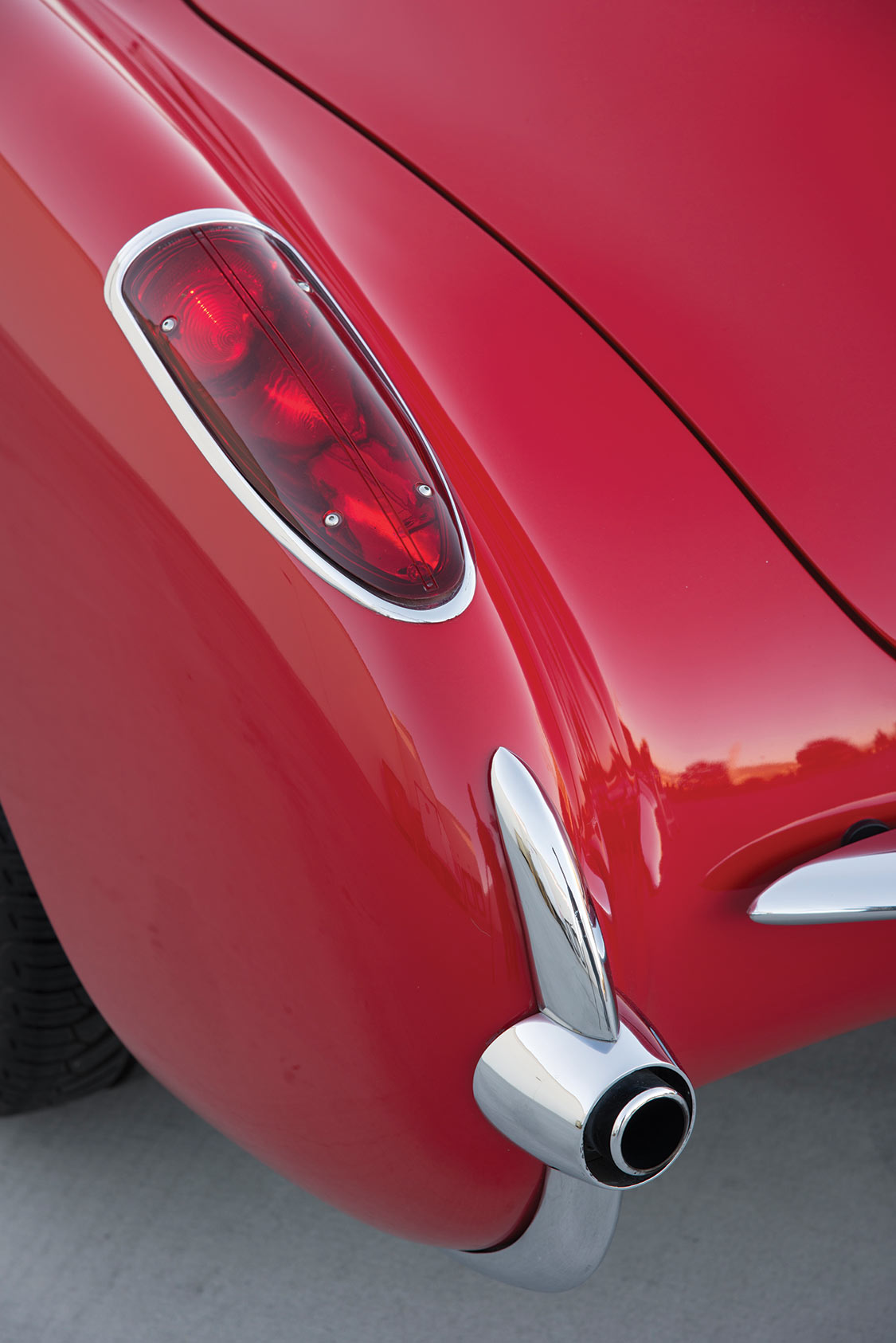
With the frame back to Nielsen, he proudly stated that he ‘self-assembled.’ Two-thirds of the required parts were sourced after reading various rodder magazines. Many other parts had to be custom formed: the power brake booster, power steering, and the radiator all had to be fabricated because of the tight fit in the engine compartment. Legendary Corvette racer Dick Gulstrand, credited for ‘dialing in the suspension,’ was the source of the springs and sway bar. The steering rack remains a stock ’85 Corvette unit that works with that year’s independent front suspension. The Dana 36 independent rear suspension is all aluminum; the center section houses a 3.70 ratio final drive. With the ratios in the smooth shifting six-speed manual transmission, this little lightweight Corvette leaps off the line in first gear, yet at 75 mph it’s only turning about 1700 rpm.
With the frame back to Nielsen, he proudly admitted that he ‘self-assembled.’
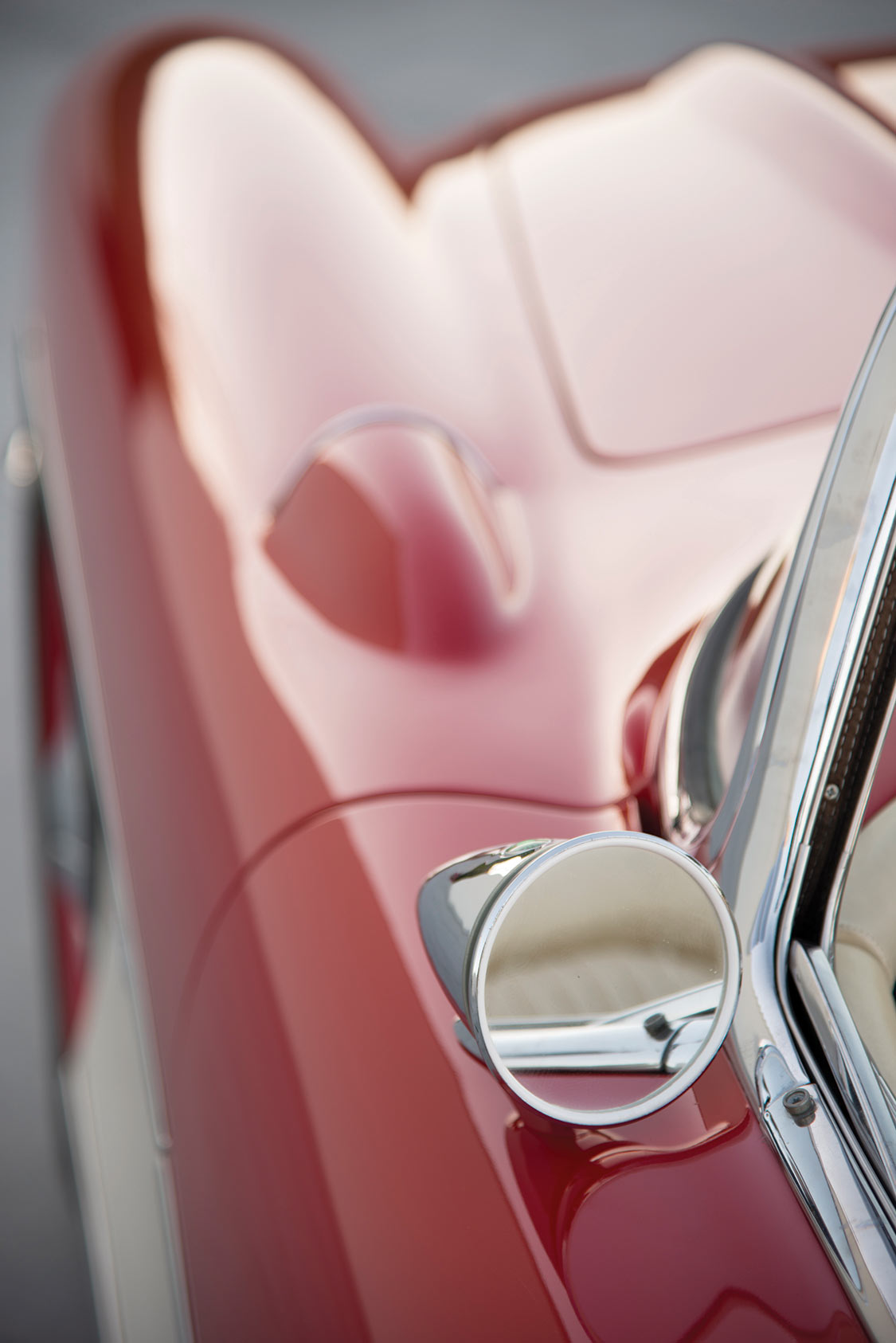
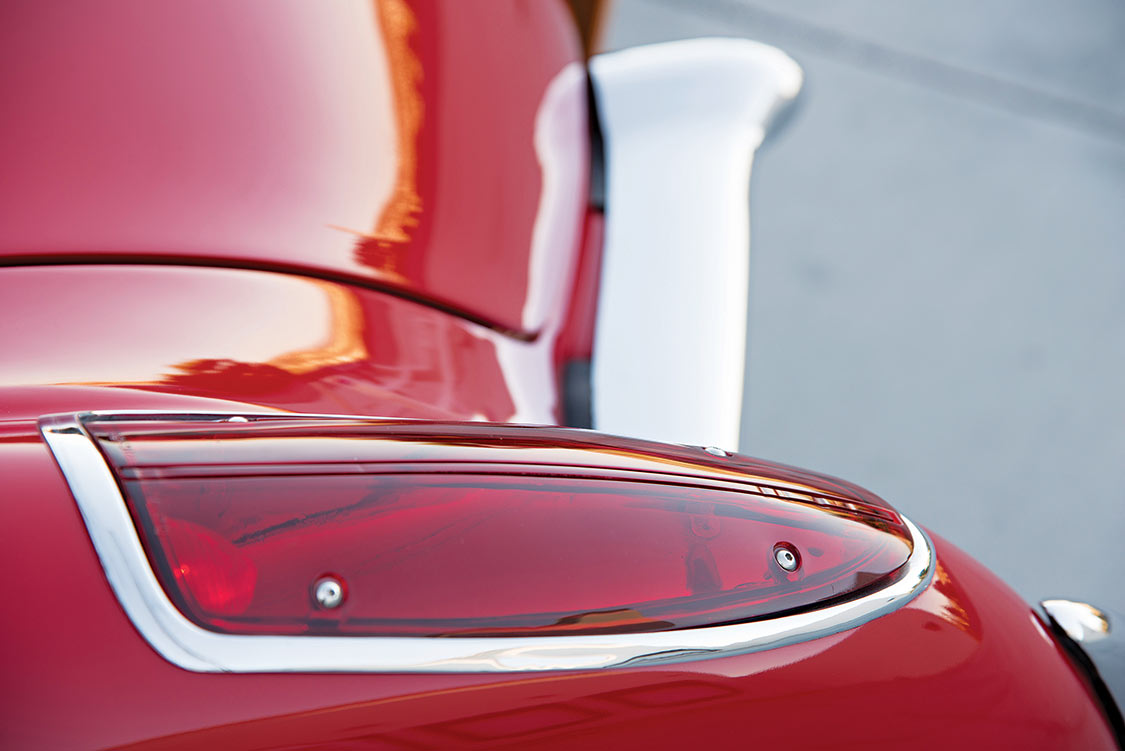
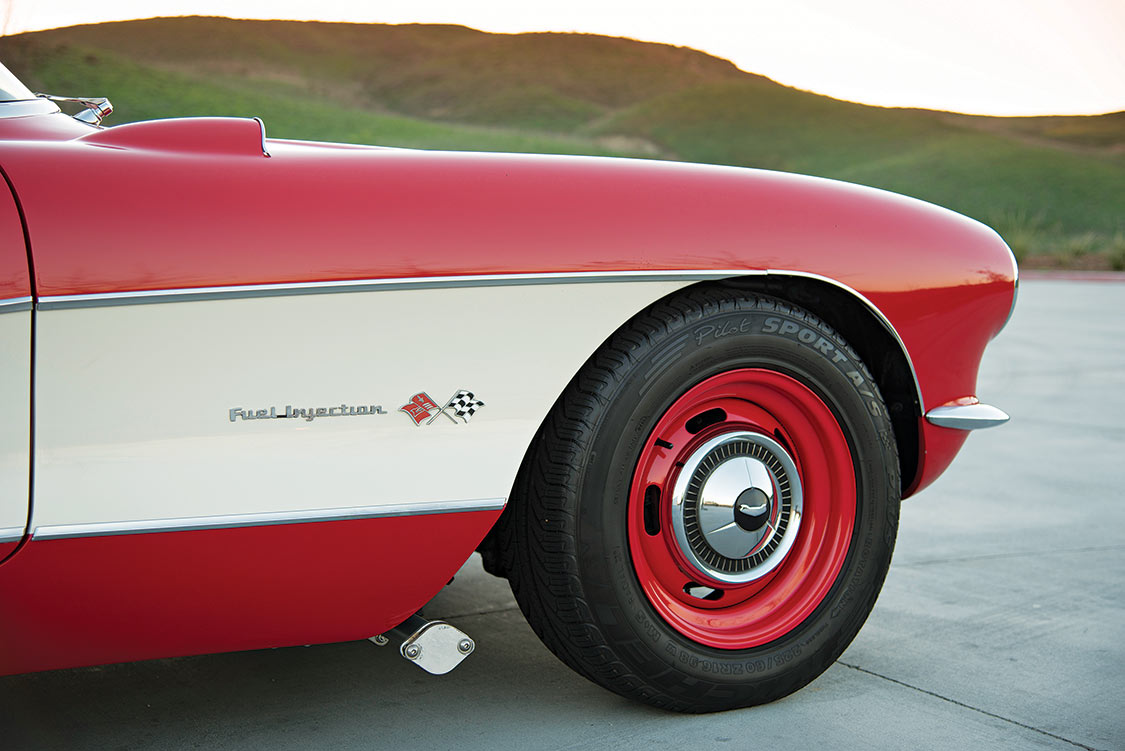
Wheel choice on any vehicle is personal, and sends a message. After careful consideration, Nielsen decided upon a painted steel wheel with a Chevrolet dog dish hubcap combination for a very specific reason: the selected wheel/cap evokes the look of the rare ‘57 Regular Production Option 276 for wider wheels that became a part of the RPO 684 factory big-brake package. Now legendary and incredibly rare, the RPO 684 big brake option included 15 by 5.5-inch wheels, one-half inch wider than the standard wheels, to accommodate the larger and wider finned brake drums that came with big binders. With the wide wheels, the standard full Corvette wheel covers would not attach correctly, so wide wheel-optioned Corvettes were delivered with small diameter Chevrolet passenger car hubcaps. Jim chose a steel wheel that achieved a period look, correctly painted the same color as the body, though his selection of a 16-inch diameter allowed the necessary clearance for the modern disc brakes on all four corners. “I recognize that the huge rally slots are not from ’57,” admits Jim. The larger wheel openings are like windows to reveal the modern rotors and calipers. The Michelin Pilot tire size is 225/60-16.
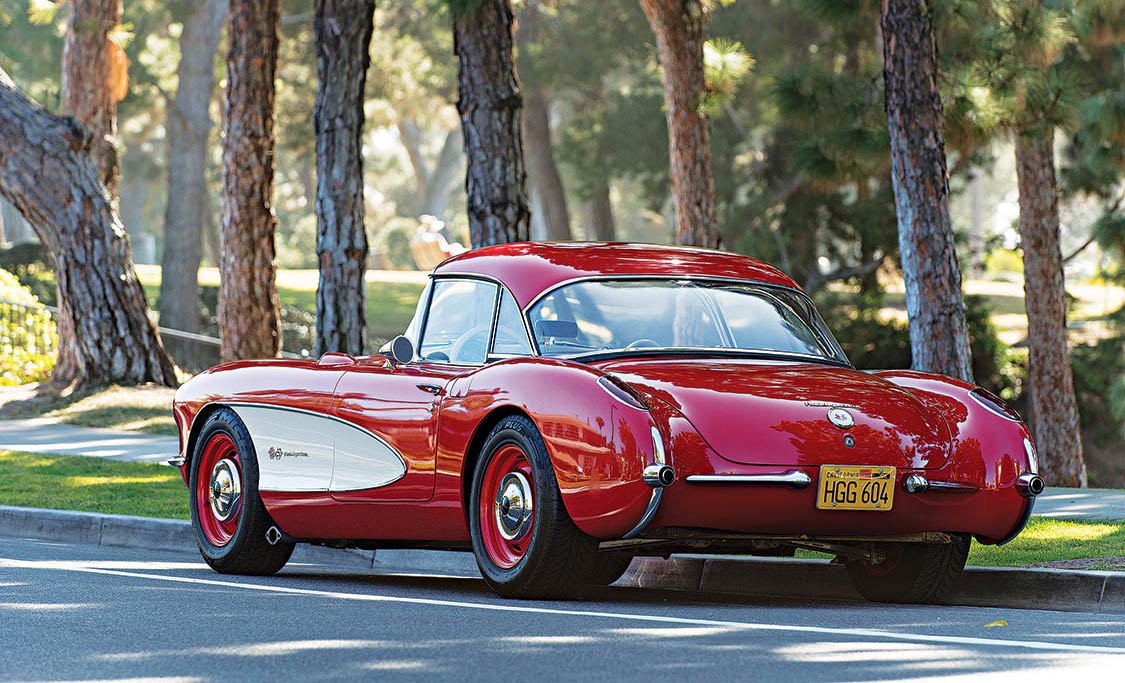
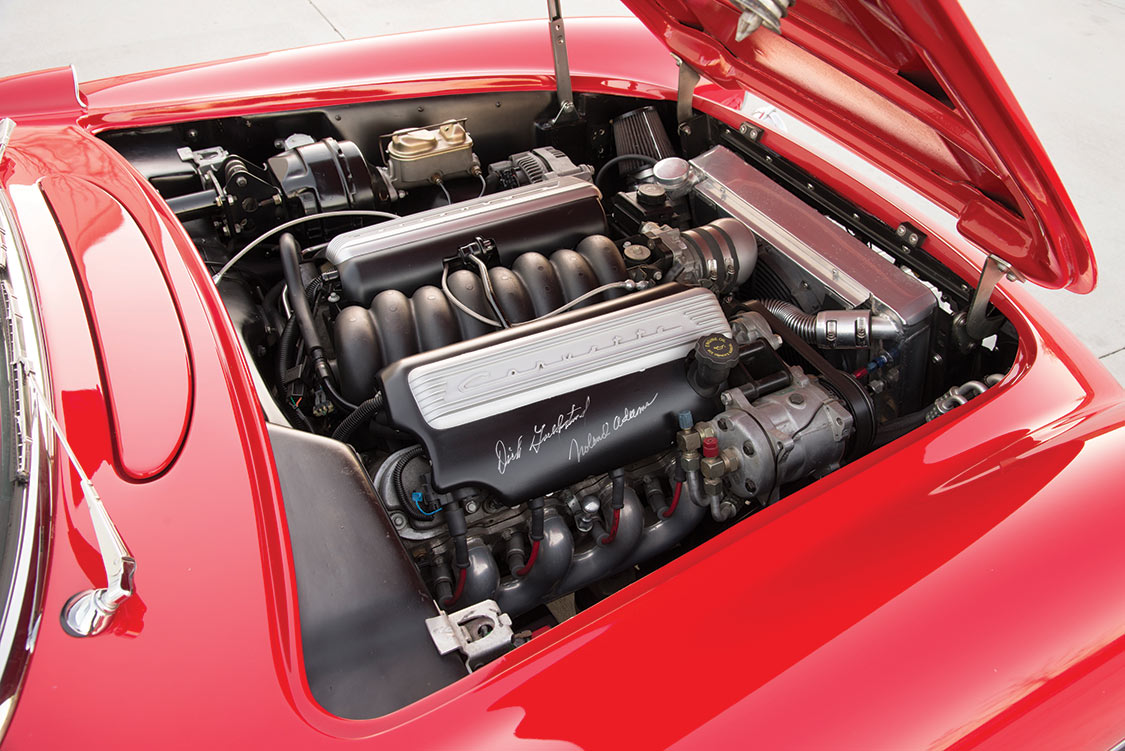
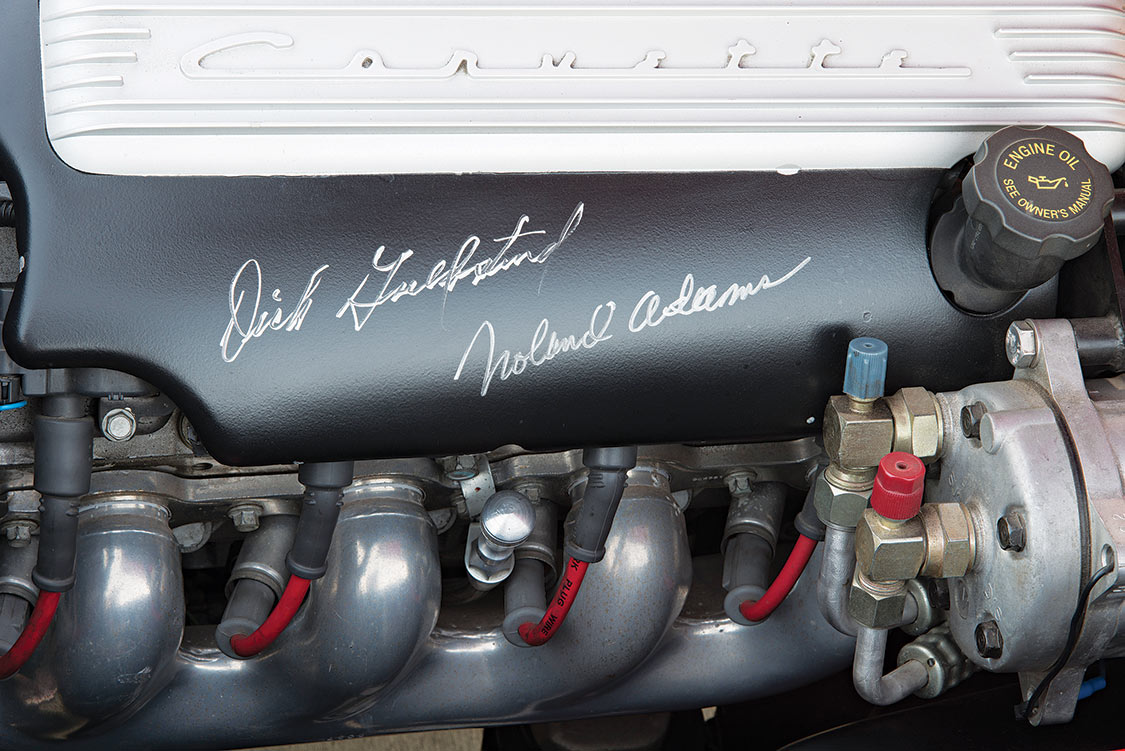
Body work was an entire reboot. The previously applied gel coat had to be removed by grinding, a messy job. The body was completely re-skinned. “The air scoops on the top of the front fenders had to be painstakingly added again, as they were deleted by a previous owner during the drag racing era, explains Nielsen. “All gaps for the doors, hood, and trunk were fitted-in at 1/8th inch.” It is without exaggeration that we recognize that no Corvette of that era ever rolled off the assembly line with tolerances that tight. It was necessary for Jim to construct all-new wheel wells, since the now fully independent suspension changed the amount of wheel travel. Close inspection at the rear of the Corvette will reveal that the taillight lenses are sourced from a 1958 Corvette, as these longer, full length lenses follow the graceful contour of the rear fenders without visual interruption. The small center strip of stainless trim has been removed so not to distract the eye. The exterior paint is Rossa Corsa, a gorgeous 2008 Ferrari red hue. The side coves are painted in Shoreline Beige, just as they could be specified in the very same color in 1957. The cost for the two-tone option that year was $19.40.
The LS1 is adorned with engine covers that emulate the finned aluminum Corvette script valve covers. They are graced with the signatures of Dick Gulstrand, and Noland Adams
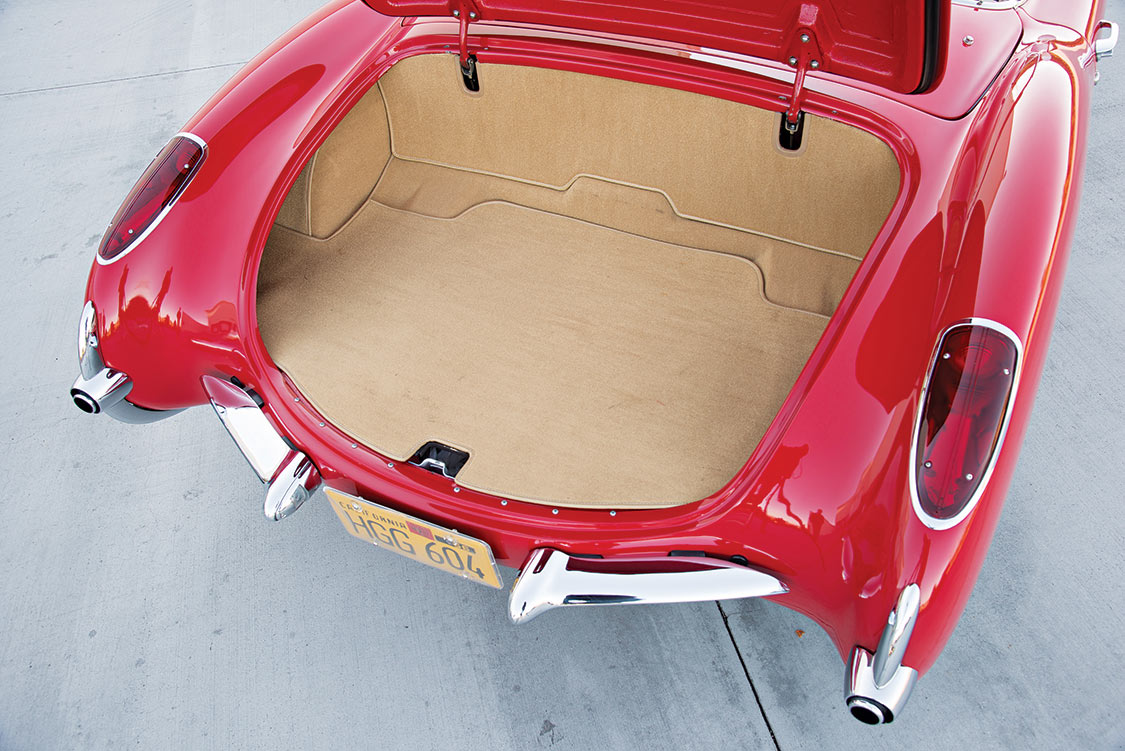
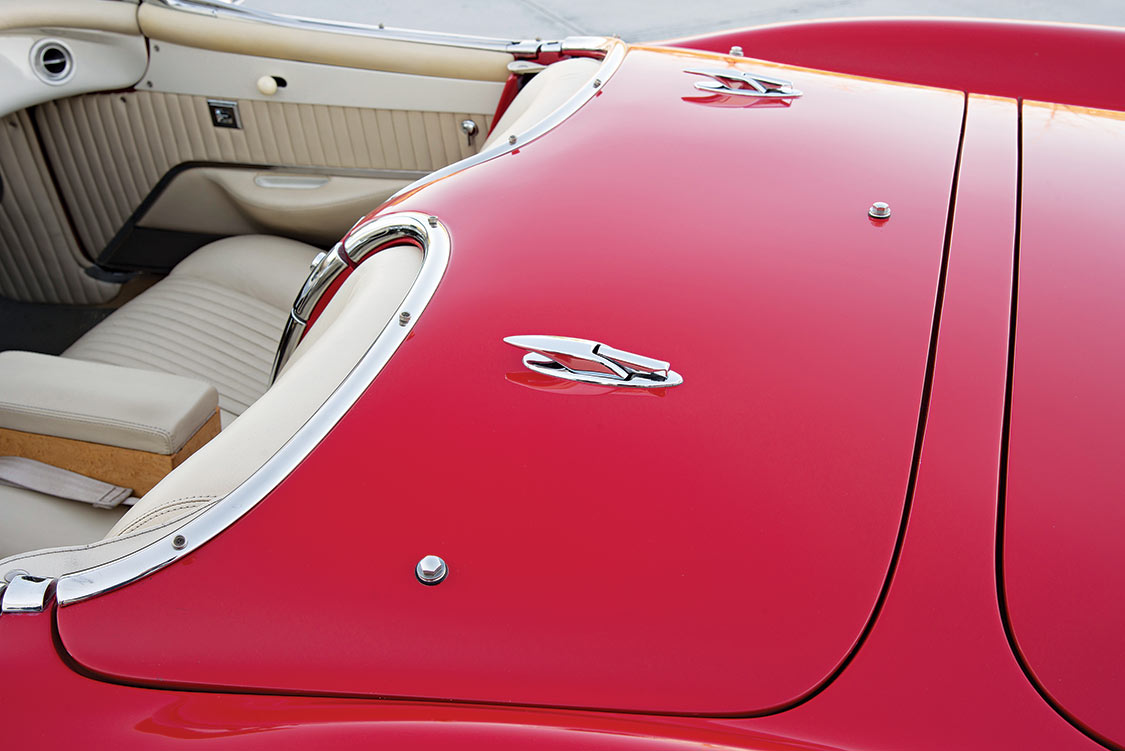
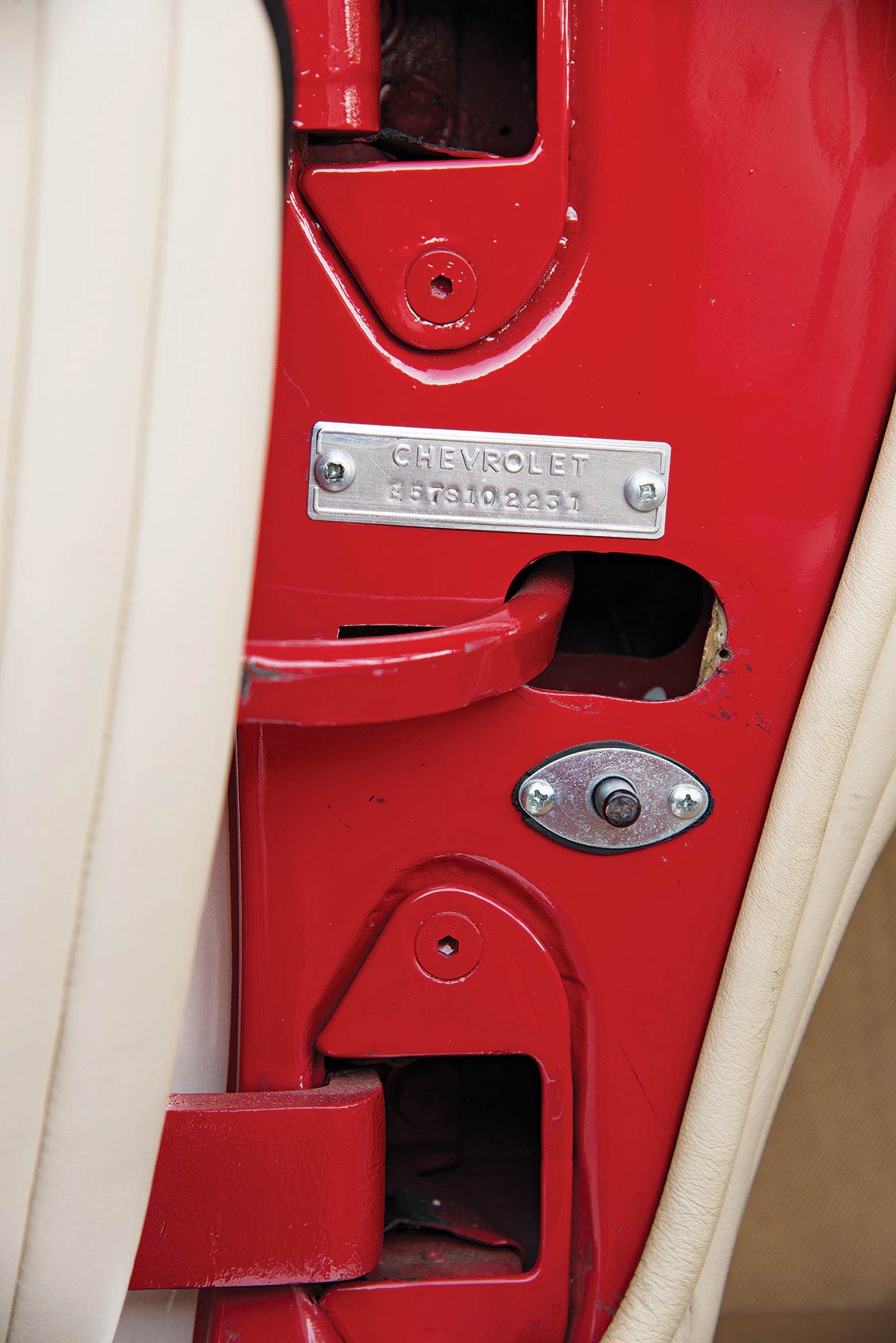
While the body remains stock in appearance, the interior has many subtle changes, primarily for driver and passenger convenience and comfort. The overall effect still preserves an original look. Dynamat sound deadening material is hidden below the finished interior, but is effective. The bone-toned leather interior is of Lexus quality; it was stitched by Little John, well known for his work on OEM concept cars. The smaller diameter, original spoke style, steering wheel works well with the power rack. The gauges across the lower width of the dashboard are now VDO. The radio is actually an entire modern sound system with additional speakers in the front kick-panels. A thoughtful husband, Jim integrated a heated seat on the passenger side for his wife Joan. Power windows were installed in the doors.
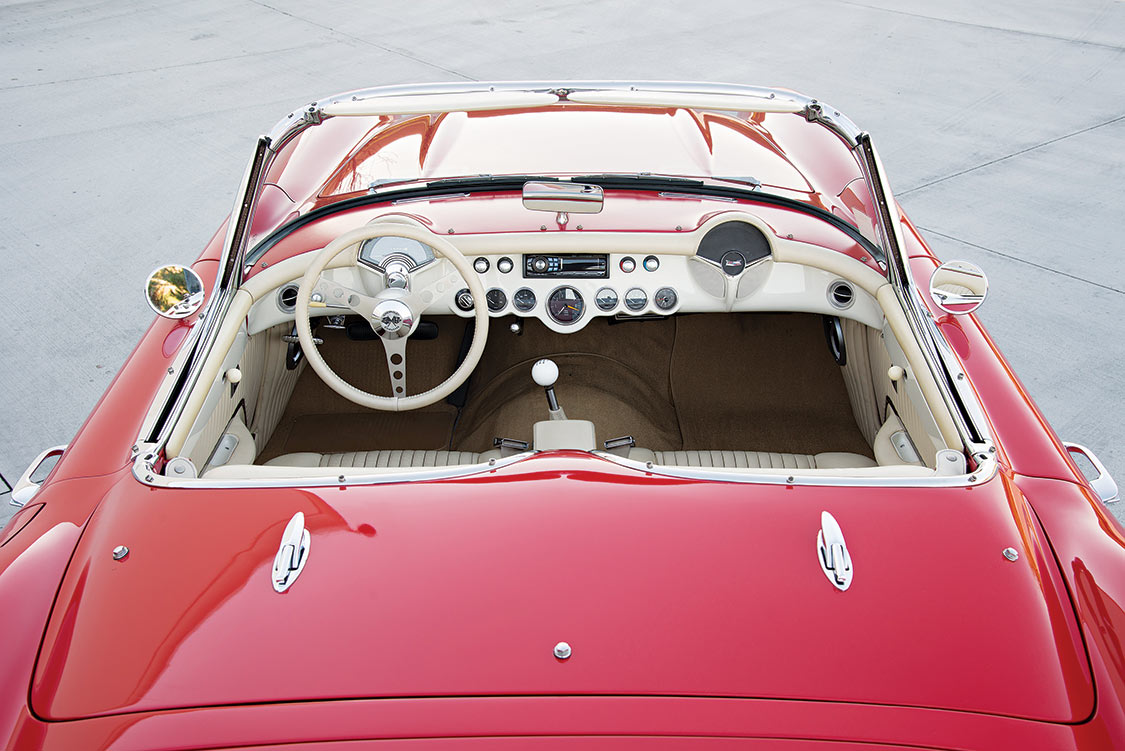
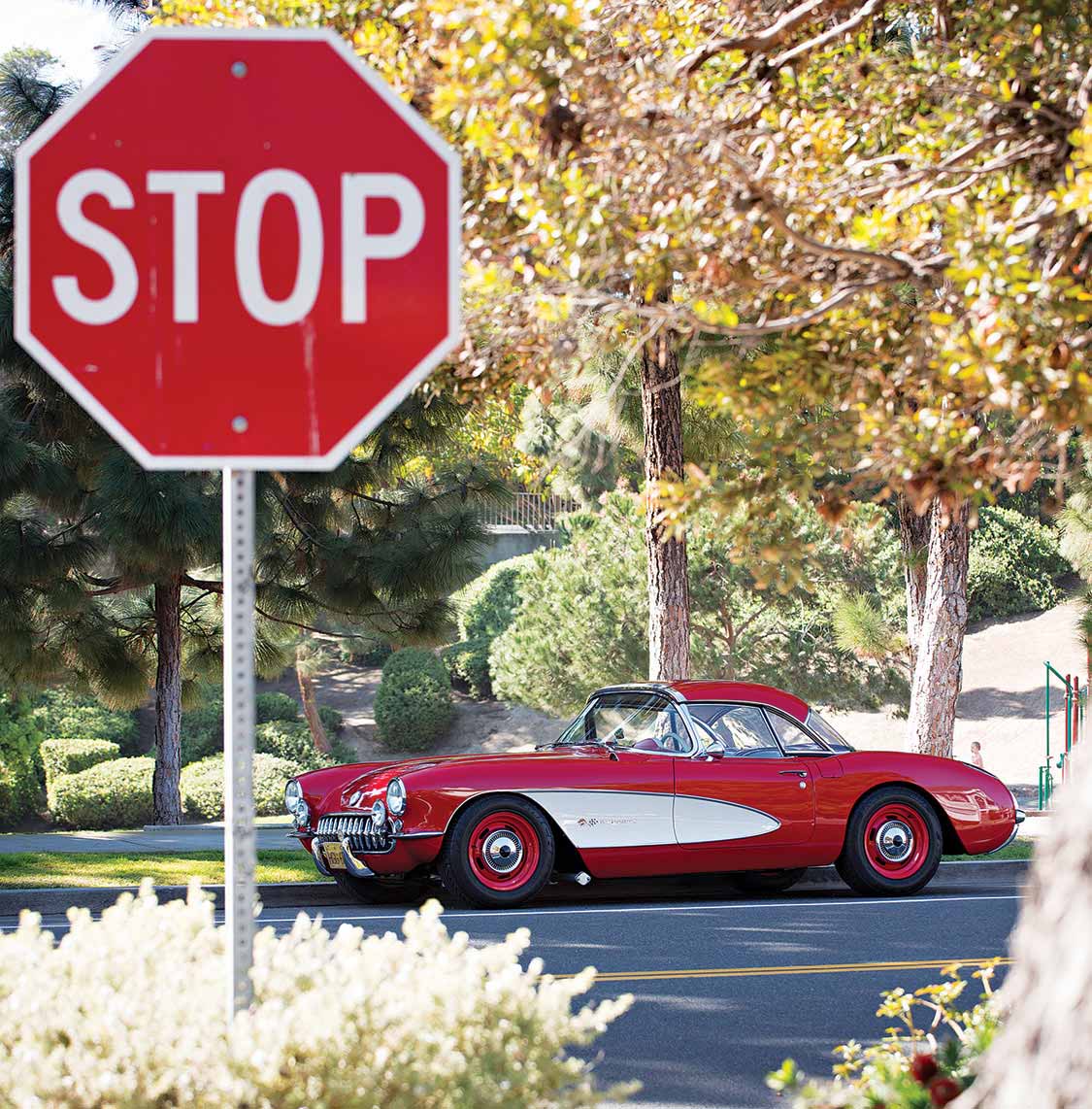
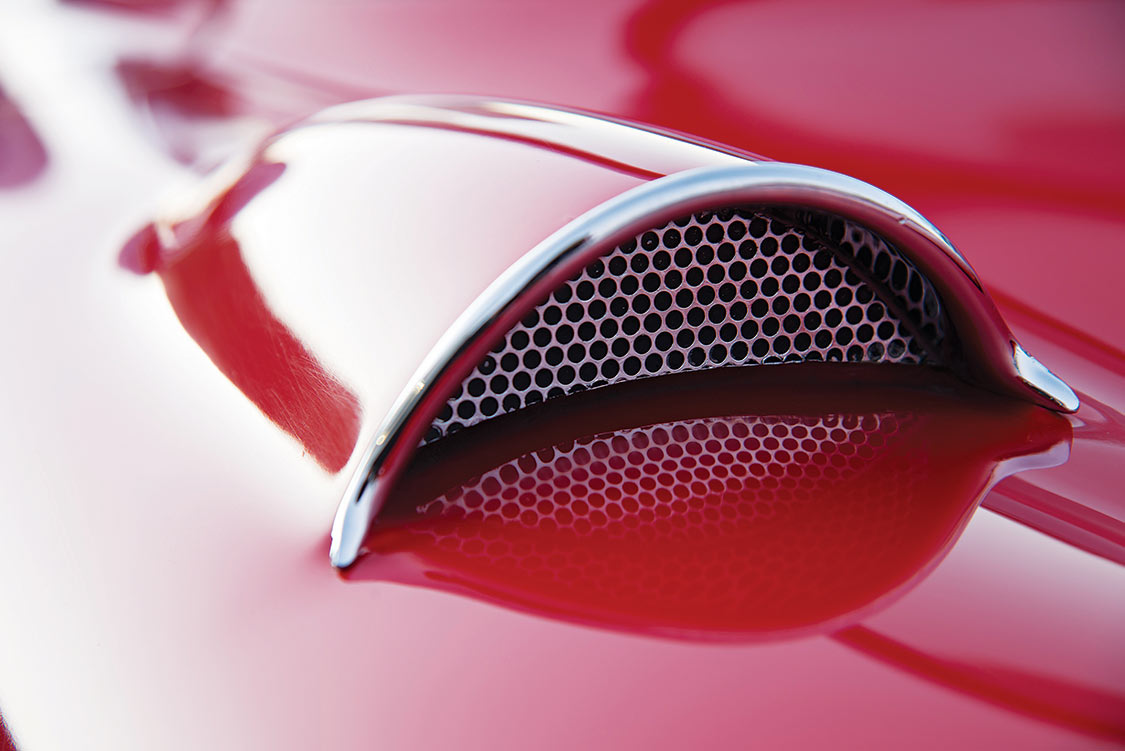
Small A/C vents are evident in the dashboard, plumbed to a modern system under the hood. For those who do not know or remember, air-conditioning was not an available Corvette option in 1957. There is a custom tonneau cover that can be snapped over the passenger side to provide a classic sports car look when out for a solo drive. Nielsen’s Corvette is equipped with the soft convertible top, hidden by the hinged cover that flows into a waterfall effect between the seats, and the car has a removable hardtop as well. Driven as an ‘open car,’ or with the soft top up or hard top installed, the classic lines of a 1957 Corvette are appreciated everywhere.
The LS1 under the hood is adorned with engine covers that emulate the original finned aluminum Corvette script valve covers. They are graced with the signatures of Dick Guldstrand, and Noland Adams (noted Corvette author and historian, and President of the Solid Axle Corvette Club; quite an endorsement!) The exhaust system retains the distinctive ‘burble’ so identifiable in the C1 performance V8 powered Corvettes. If more decibel volume is desired, all Jim has to do is throw a switch to open the electric cutouts that allow the exhaust to exit un-muffled just behind the front wheels.
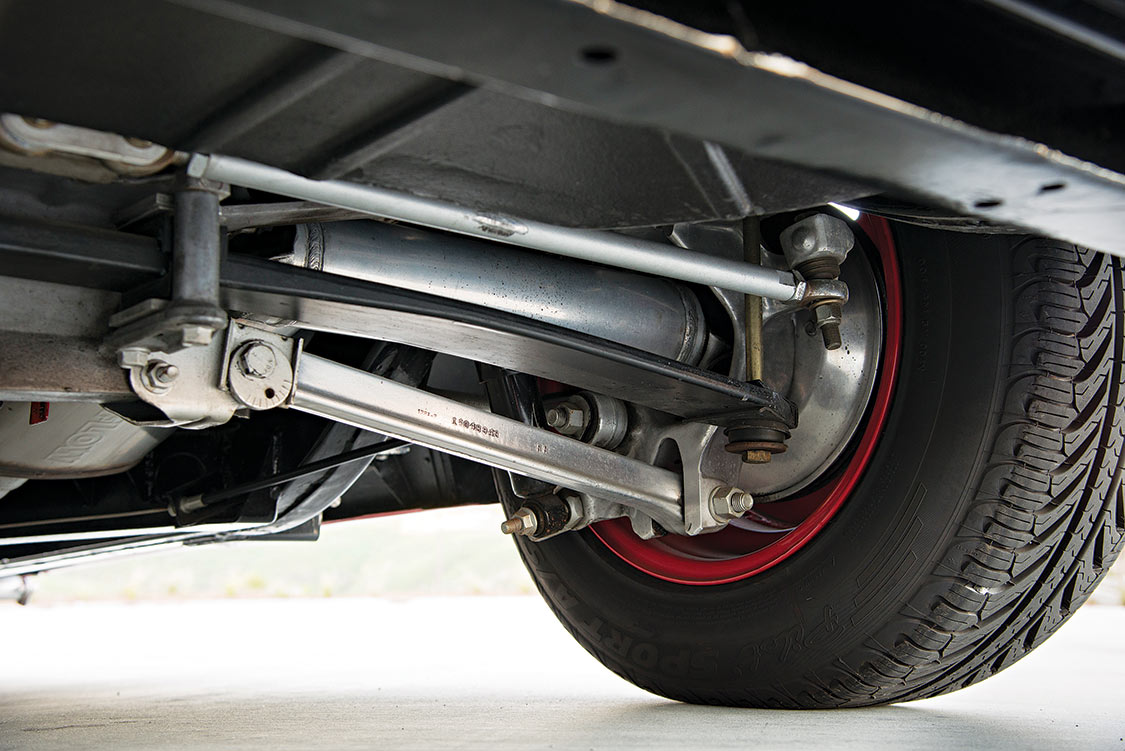
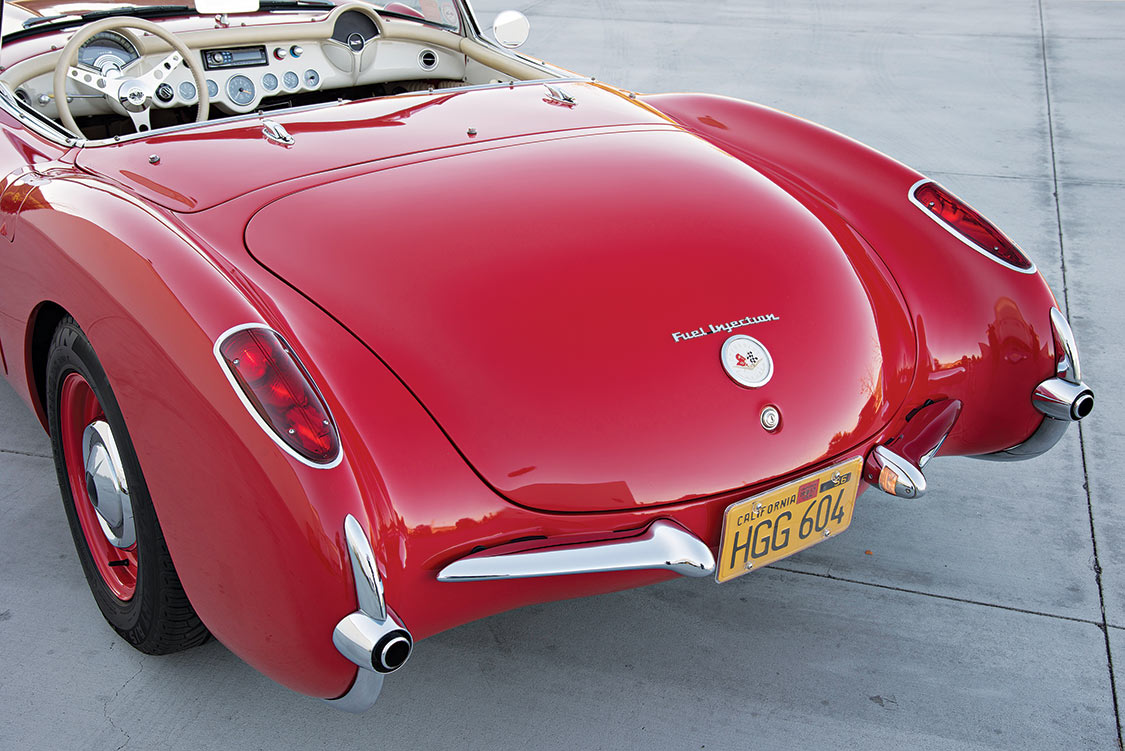
Bought in boxes, this vintage ‘Vette was changed into a road handling powerhouse with a modern motor and a contemporary chassis. It’s the type of result that if Zora Arkus Dutov, the now-legendary GM engineer credited with creating the performance image of the early Corvettes, was subjected to a Rip Van Winkle scenario, and woke up after a long slumber to discover and utilize modern technology enveloped in that beautiful C1 body.
To summarize in few words: This ex-drag car is no drag on the street.